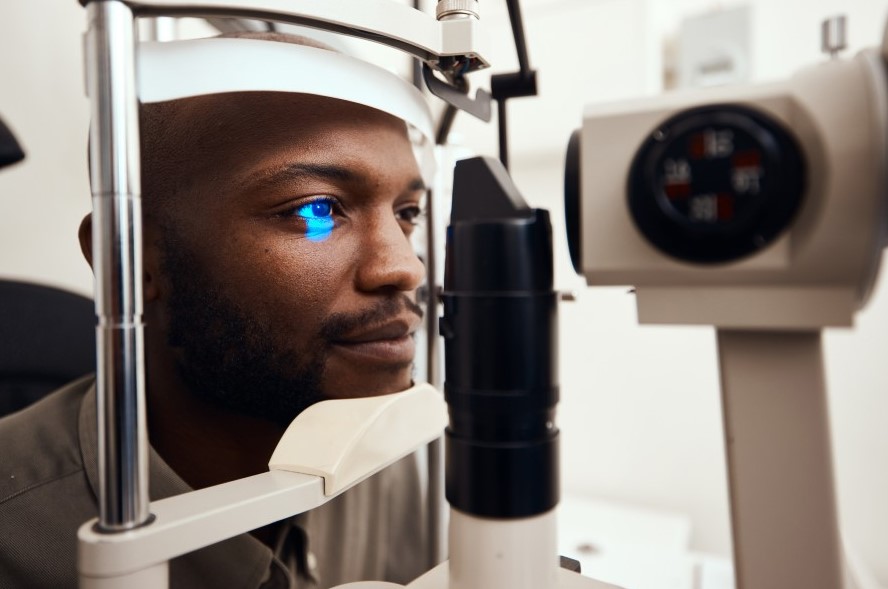

Glaucoma, often referred to as the “silent thief of sight,” is a group of eye conditions that damage the optic nerve, leading to irreversible vision loss. It is one of the leading causes of blindness worldwide, affecting millions of people. What makes glaucoma particularly concerning is its gradual progression, often without noticeable symptoms until significant damage has occurred. In this article, along with Dr. Zuhal Butuner we delve into the effects of glaucoma on vision, the different types of glaucoma, risk factors, and the importance of early detection and treatment.
1. Vision Loss and Irreversibility
Glaucoma slowly damages the optic nerve, which is responsible for transmitting visual information from the eye to the brain. As the nerve fibers degenerate, vision loss begins with peripheral or side vision, leading to tunnel vision. Over time, if left untreated, glaucoma can progress to complete blindness.
The damage caused by glaucoma is irreversible, emphasizing the importance of early detection and timely treatment to slow or halt the progression of the disease.
2. Types of Glaucoma
There are several types of glaucoma, but the two most common ones are primary open-angle glaucoma (POAG) and angle-closure glaucoma (ACG).
– POAG: This is the most common form of glaucoma, accounting for about 90% of cases. It develops gradually, with the drainage canals in the eye becoming clogged, leading to increased intraocular pressure (IOP). Elevated IOP can damage the optic nerve and cause vision loss.
– ACG: This type of glaucoma is less common but can be more sudden and severe. It occurs when the iris is too close to the drainage angle of the eye, blocking the outflow of fluid. This sudden increase in IOP can result in acute angle-closure glaucoma, a medical emergency that requires immediate attention.
3. Risk Factors
While anyone can develop glaucoma, certain factors increase the risk:
– Age: Glaucoma is more common in individuals over the age of 60.
– Family History: A family history of glaucoma increases the risk of developing the disease.
– High Intraocular Pressure (IOP): Elevated IOP is a significant risk factor for glaucoma, but not all cases of glaucoma are associated with high IOP.
– Ethnicity: People of African, Asian, and Hispanic descent are at higher risk for certain types of glaucoma.
– Myopia (Nearsightedness) or Hyperopia (Farsightedness): Extreme nearsightedness or farsightedness may increase the risk of glaucoma.
4. Importance of Early Detection and Treatment
Regular eye exams are essential for early detection of glaucoma. During an eye exam, an optometrist or ophthalmologist can measure IOP, evaluate the health of the optic nerve, and assess the visual field. Detecting glaucoma in its early stages allows for early intervention and treatment, which can slow or prevent further vision loss.
Treatment options for glaucoma include eye drops, oral medications, laser therapy, and surgical procedures. The goal of treatment is to lower IOP and manage the condition to preserve the remaining vision.
5. The Impact on Daily Life
The effects of glaucoma extend beyond vision loss. Individuals with glaucoma may experience challenges in daily activities, such as driving, reading, recognizing faces, and navigating unfamiliar environments. Visual impairment can also impact a person’s independence, mobility, and overall quality of life.
6. Coping with Vision Loss
Adjusting to vision loss due to glaucoma can be emotionally challenging. Support from family, friends, and vision rehabilitation services can help individuals adapt to their new circumstances and maintain a fulfilling life.
Conclusion
Glaucoma is a serious eye condition that silently robs people of their sight. It gradually damages the optic nerve, leading to irreversible vision loss if left untreated. Early detection and timely treatment are crucial for managing glaucoma and preserving vision. Regular eye exams, especially for individuals at higher risk, are essential for early diagnosis.
By understanding the effects of glaucoma on vision and the importance of eye health, we can take proactive steps to protect our eyes and ensure that this “silent thief of sight” does not rob us of the gift of seeing the beauty of the world around us. Remember, vision is a priceless asset that warrants our utmost care and attention.









